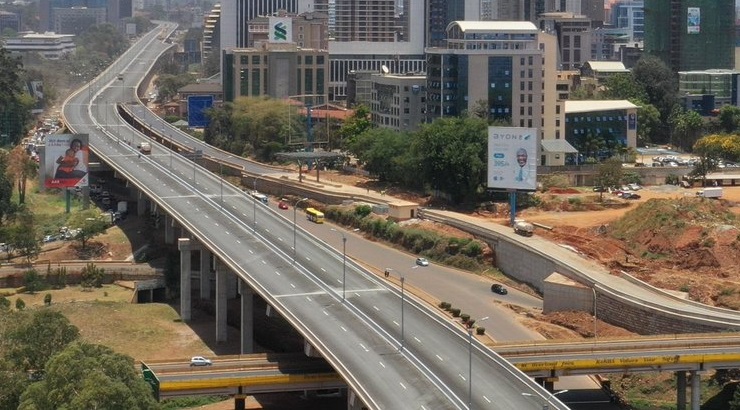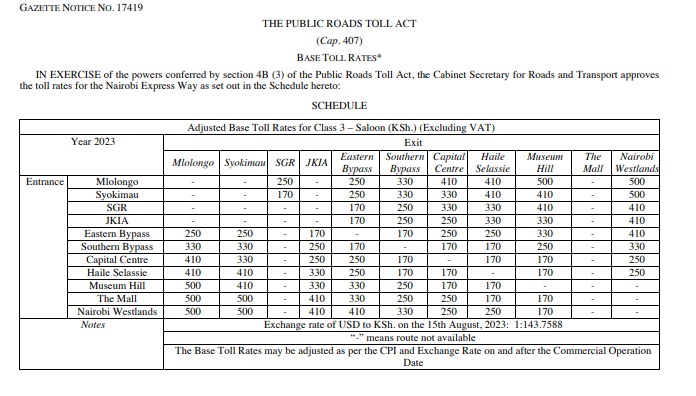Infrastructure
Nairobi Expressway: Kenya’s First Elevated Highway
The road begins at Mlolongo, connects JKIA to the CBD, and ends in Westlands.

Not to be confused with the Mombasa-Nairobi Expressway, the Nairobi Expressway is a 27km elevated road that connects Jomo Kenyatta International Airport (JKIA) to Westlands.
The toll highway, officially opened in July 2022, was built under a public-private partnership between Kenya and China Road & Bridge Corporation (CRBC).
According to the deal, CRBC spent their money to build the road. They then started charging toll fees and will continue until they recover their investment.
Thereafter, the contractor will hand over the project to the government.
The Nairobi Expressway, whose construction started in 2019, begins at Mlolongo, connects JKIA to the city centre, and then ends at James Gichuru in Westlands.
Nairobi Expressway Charges
- Mlolongo to Westlands: Sh500
- Syokimau to Westlands: Sh500
- SGR to Westlands: Sh410
- JKIA to Westlands: Sh410
- Eastern Bypass to Westlands: Sh410
- Southern Bypass to Westlands: Sh330
- Capital Center to Westlands: Sh250
- Haile Selassie to Westlands: Sh250

Cost of Nairobi Expressway
Official records show the highway was built at Sh72 billion, although the figure is estimated to have risen to Sh88 billion by completion.
This puts the cost of the Nairobi Expressway per km at Sh3.26 billion.
Design of the highway
The road is designed with the first 15.5 km (Mlolongo to Nextgen Mall) at grade level; 8.5 km (Nextgen Mall to St. Mark, Westlands) elevated; and a 3.6 km ground-level section to the James Gichuru junction.
The section between Eastern Bypass and Southern Bypass is a six-lane dual carriageway, while the sections from Mlolongo to Eastern Bypass and from Southern Bypass to James Gichuru are four-lane dual carriageways.
RELATED: Koreans to Build ‘Sh1.5 Trillion’ Nairobi-Mombasa Expressway
The elevated highway begins near Ole Sereni Hotel and runs through the CBD along Uhuru Highway up to James Gichuru junction.
Haile Selassie Road, Kenyatta Avenue, and University Way pass below the elevated road.
Visual intrusion
Before the construction of the Nairobi Expressway, some city residents had expressed concerns about the negative visual impact the road would have created.
At the same time, business owners and landlords alongside the highway had also expressed fears that, if constructed, the road would lower their property values.
These concerns were believed to be the reason the government temporarily scrapped the project at some point to pursue other ways to decongest the city.














